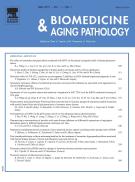Thyroxine-induced cardiac hypertrophy: Role of ascorbic acid in treatment - 10/05/14
 , Ehab Tousson
, Ehab Tousson 
Abstract |
The heart is a major target organ for thyroid hormone action and marked changes occur in cardiac function in the case of hypo- or hyperthyroidism. Hyperthyroidism is a common metabolic disorder with prominent cardiovascular manifestation. We studied the changes in the heart structure and functions of hyperthyroid rat and ameliorating and protective role of ascorbic acid in treatment. Fourty male albino rats were equally divided into five groups; the first and second groups were the control and ascorbic acid groups respectively. Third group was the hyperthyroid rat group while 4th and 5th groups were co- and post-treated hyperthyroid rat with ascorbic acid respectively. Serum T3 and T4 levels were significantly increased also; TSH levels were significantly decreased in hyperthyroid rat as compared to control rat groups. Cholesterol, triglyceride, LDL-c and VLDL-c were significantly decreased when compared with control group. Many of abnormalities as severe hydrophobic changes of myofibrillar structure with striations, hypertrophy, cytoplasmic vacuoles and marked increase in desmin immunoreactivity were observed in left ventricle in hyperthyroid rats. Treatment with ascorbic acid helps in improving the adverse effect of hypothyroidism and also the histopathological and desmin immunoreactivity results confirms this finding.
Le texte complet de cet article est disponible en PDF.Keywords : Hyperthyroid, Heart, Ascorbic acid, Lipid profile, Histopathology, Desmin immunohistochemistry
Plan
Vol 4 - N° 2
P. 161-167 - avril 2014 Retour au numéroBienvenue sur EM-consulte, la référence des professionnels de santé.
L’accès au texte intégral de cet article nécessite un abonnement.
Déjà abonné à cette revue ?

